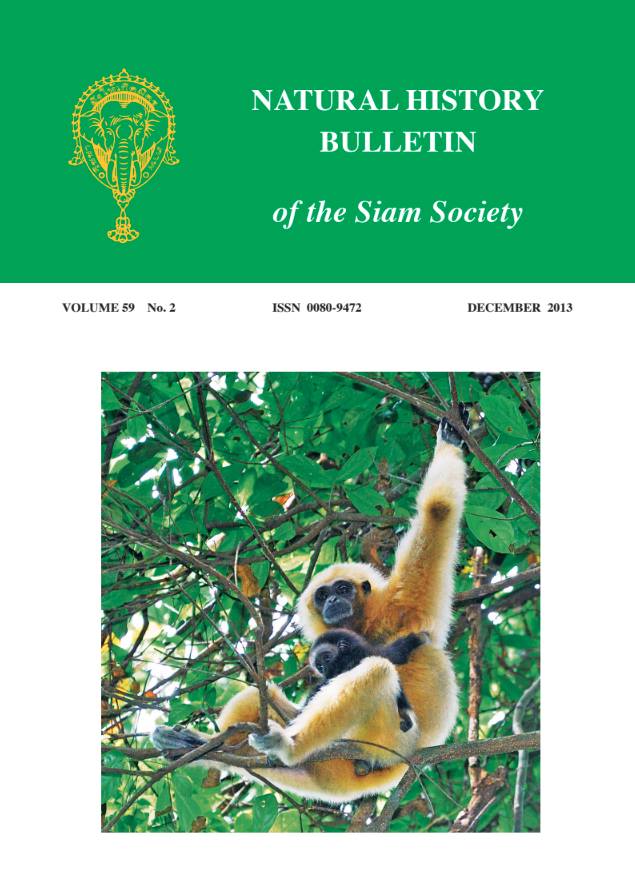Complexities of Linking Defaunation to Tree Community Dynamics: Case Studies From National Parks in Thailand
Main Article Content
Abstract
Widespread hunting in tropical forests raises the possibility of major changes to tree populations and communities following the extirpation of seed-dispersing vertebrates. Longterm studies of tree and forest dynamics in national parks, especially Khao Yai National Park, in Thailand provide important case studies and data to address this issue. Some trees, such as the canopy dominant Choerospondias axillaris, suffer population decline in over-hunted parks. But such processes must also be placed within longer temporal scale and broader spatial scale contexts; C. axillaris appears to depend on episodic forest disturbances for recruitment, and the effects of vertebrate frugivores on the tree’s abundance may vary with forest successional stage. C. axillaris populations are not self-sustaining in closed canopy forest, even with abundant seed dispersers; yet seed dispersal by deer may be critical for the species to reach open habitats where recruitment is enhanced. Research in Thailand has also suggested that frugivore guilds may contain little redundancy despite their diversity. The tree Prunus javanicus is dispersed by a variety of bird and mammal species, but of these only certain primates and hornbills provide high quality dispersal. Moreover, the strength of the effect of frugivore species on tree demography is impossible to predict based on frugivore visitation rates alone. Finally, research has demonstrated that not all frugivores are mutualists; even those that do not destroy seeds outright can function as ‘free riders’ by precluding removal by more effective dispersal agents. Assessing the impacts of overhunting on tropical tree species and communities remains difficult due to the variety of life history strategies among trees and frugivores.


